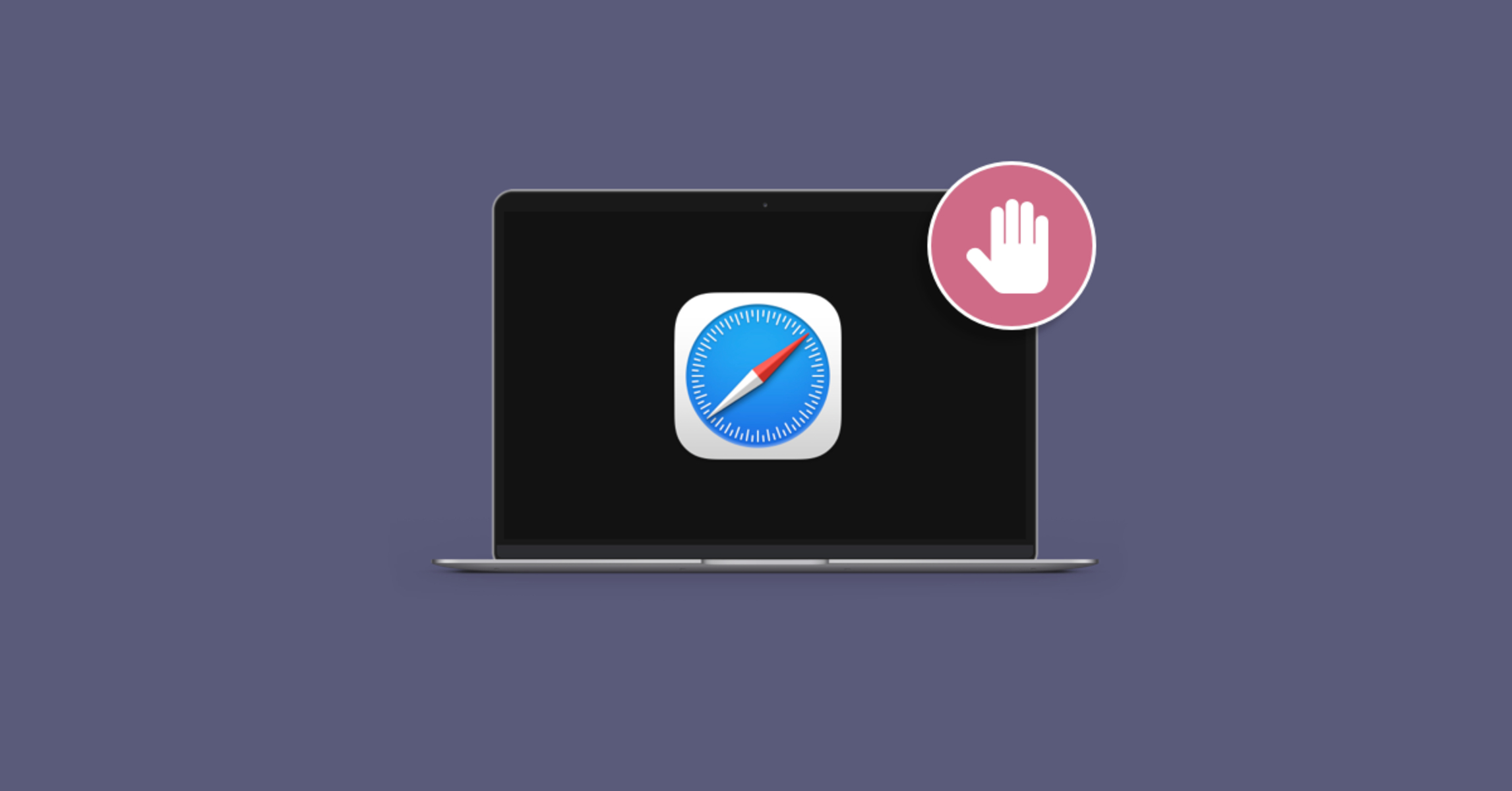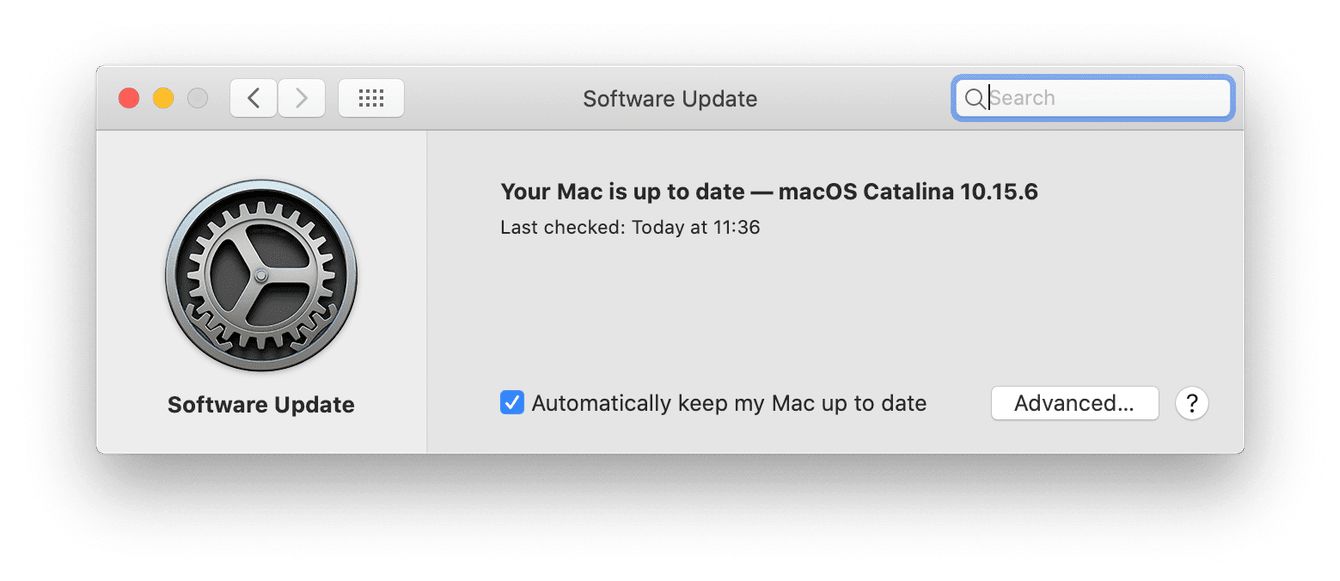Check for Updates
One of the most common reasons for Safari crashing is outdated software. Ensuring that both Safari and the operating system are up to date can significantly improve the browser's stability. Here's how to check for updates on both iOS and macOS:
iOS Updates
- Open Settings: Tap on the "Settings" app on your iOS device.
- Select General: Scroll down and tap on "General."
- Tap Software Update: If an update is available, you will see an option to "Download and Install." Tap on this to initiate the update process.
macOS Updates
- Open the Apple Menu: Click on the Apple logo in the top-left corner of the screen.
- Select System Preferences: Choose "System Preferences" from the drop-down menu.
- Click on Software Update: If there are updates available, you will see an option to "Update Now." Click on this to begin the update process.
By regularly checking for and installing updates, you can ensure that Safari and the underlying operating system are equipped with the latest bug fixes and security patches. This proactive approach can help prevent crashes and enhance the overall browsing experience.
Remember, keeping software updated is not only crucial for performance and stability but also for safeguarding your device against security vulnerabilities. Therefore, making it a habit to check for updates regularly is a proactive step towards maintaining a smooth and secure browsing experience.
Clear Safari Cache
Clearing the cache in Safari can often resolve issues related to slow performance and frequent crashes. The cache is a temporary storage location for website data, such as images, scripts, and other elements. While the cache is designed to speed up the browsing experience by storing frequently accessed data, it can sometimes become bloated or corrupted, leading to unexpected browser behavior.
To clear the cache in Safari on iOS devices, follow these steps:
- Open Settings: Tap on the "Settings" app on your iOS device.
- Scroll Down and Select Safari: Scroll down the settings menu and tap on "Safari."
- Tap on Clear History and Website Data: This action will remove browsing history, cookies, and other data stored in the cache.
On macOS, the process of clearing the cache in Safari is slightly different:
- Open Safari: Launch the Safari browser on your Mac.
- Click on Safari in the Menu Bar: At the top of the screen, click on "Safari" in the menu bar.
- Select Clear History: A drop-down menu will appear, allowing you to choose "Clear History." This action will also remove website data stored in the cache.
By clearing the cache, you effectively reset the stored website data, which can help eliminate any corrupted or outdated information that may be contributing to Safari crashes. Additionally, clearing the cache can free up storage space and improve the overall performance of the browser.
It's important to note that clearing the cache will also remove browsing history and cookies. While this can enhance privacy and security by erasing potentially sensitive data, it also means that you may need to re-enter login credentials and customize certain website settings after clearing the cache.
In summary, clearing the cache in Safari is a straightforward troubleshooting step that can often alleviate performance issues and prevent frequent crashes. By periodically clearing the cache, users can ensure that Safari operates smoothly and efficiently, providing a seamless browsing experience across iOS and macOS devices.
Disable Safari Extensions
Safari extensions are add-on tools that enhance the functionality of the browser by providing additional features and customization options. While these extensions can be incredibly useful, they can also be a source of instability, leading to frequent crashes and performance issues. Disabling Safari extensions is a crucial troubleshooting step that can help identify and address potential causes of browser instability.
Disabling Safari Extensions on iOS Devices
To disable Safari extensions on iOS devices, follow these steps:
- Open Safari Settings: Tap on the "Settings" app on your iOS device.
- Scroll Down and Select Safari: Scroll down the settings menu and tap on "Safari."
- Tap on Extensions: If you have any extensions installed, you will see an option to manage them. Tap on "Extensions" to view the list of installed extensions.
- Toggle Off: Disable the toggle switch next to each extension to turn it off.
By disabling extensions on iOS, you can isolate the browser's performance and stability from the potential impact of third-party add-ons. This allows you to assess whether any installed extensions are contributing to Safari crashes.
Disabling Safari Extensions on macOS
On macOS, the process of disabling Safari extensions is as follows:
- Open Safari: Launch the Safari browser on your Mac.
- Click on Safari in the Menu Bar: At the top of the screen, click on "Safari" in the menu bar.
- Select Preferences: From the drop-down menu, choose "Preferences."
- Navigate to Extensions: In the Preferences window, select the "Extensions" tab to view the list of installed extensions.
- Uncheck Enabled Extensions: Uncheck the box next to each extension to disable it.
By disabling extensions in Safari on macOS, you can effectively troubleshoot browser crashes and performance issues by eliminating the potential impact of third-party add-ons.
The Impact of Disabling Safari Extensions
Disabling Safari extensions is a valuable diagnostic step that can help identify the root cause of browser instability. By temporarily turning off extensions, users can assess whether any specific add-ons are contributing to crashes or other issues. This process of elimination allows for a targeted approach to troubleshooting, enabling users to pinpoint and address problematic extensions.
Once extensions are disabled, users can gradually re-enable them one by one, testing the browser's stability after each activation. This methodical approach can help identify specific extensions that may be causing conflicts or instability within Safari.
In summary, disabling Safari extensions is an essential troubleshooting technique that allows users to isolate potential sources of browser instability. By systematically assessing the impact of individual extensions, users can effectively identify and address issues that may be contributing to Safari crashes, ultimately enhancing the overall browsing experience.
Reset Safari Settings
Resetting Safari settings can serve as a powerful troubleshooting tool to address persistent issues and restore the browser to a more stable state. This process effectively reverts various browser configurations to their default settings, potentially resolving underlying issues that contribute to crashes and performance degradation.
Resetting Safari Settings on iOS Devices
On iOS devices, the process of resetting Safari settings involves the following steps:
- Open Settings: Tap on the "Settings" app on your iOS device.
- Scroll Down and Select Safari: Scroll down the settings menu and tap on "Safari."
- Scroll to the Bottom and Tap on 'Clear History and Website Data': This action will remove browsing history, cookies, and other browsing-related data, effectively resetting Safari settings to their default state.
By resetting Safari settings on iOS, users can eliminate potential configuration conflicts or corrupted data that may be contributing to browser crashes and instability. This process provides a fresh start for Safari, allowing users to assess whether the default settings alleviate the issues they were experiencing.
Resetting Safari Settings on macOS
On macOS, the process of resetting Safari settings involves the following steps:
- Open Safari: Launch the Safari browser on your Mac.
- Click on Safari in the Menu Bar: At the top of the screen, click on "Safari" in the menu bar.
- Select Preferences: From the drop-down menu, choose "Preferences."
- Navigate to Privacy: In the Preferences window, select the "Privacy" tab.
- Click on 'Manage Website Data': This action allows you to remove stored website data, cookies, and other browsing information, effectively resetting Safari settings.
By resetting Safari settings on macOS, users can address potential configuration conflicts, corrupted data, or misbehaving preferences that may be contributing to browser crashes and performance issues. This process provides a clean slate for Safari, enabling users to evaluate whether the default settings resolve the challenges they were encountering.
The Impact of Resetting Safari Settings
Resetting Safari settings can be a transformative troubleshooting step, offering a fresh start for the browser and allowing users to assess the impact of default configurations on stability and performance. By reverting to default settings, users can effectively isolate and address underlying issues, potentially resolving persistent crashes and restoring the browser to a more reliable state.
In summary, resetting Safari settings is a valuable troubleshooting technique that empowers users to address persistent issues and restore the browser to a stable state. By leveraging the default configurations, users can systematically assess the impact of resetting settings on browser performance, ultimately enhancing the overall browsing experience.
Update iOS or macOS
Keeping the operating system up to date is essential for maintaining the stability and performance of Safari. Apple regularly releases updates for iOS and macOS, addressing security vulnerabilities, introducing new features, and enhancing the overall functionality of the operating systems. By ensuring that your device is running the latest version of iOS or macOS, you can mitigate potential compatibility issues and address underlying system-level factors that may contribute to Safari crashes.
Updating iOS
For iOS devices, staying current with the latest iOS version is crucial for optimizing Safari's performance and stability. To check for and install iOS updates, follow these steps:
- Open Settings: Tap on the "Settings" app on your iOS device.
- Select General: Scroll down and tap on "General."
- Tap Software Update: If an update is available, you will see an option to "Download and Install." Tap on this to initiate the update process.
By regularly updating iOS, you can ensure that Safari benefits from the latest system improvements and security enhancements. This proactive approach not only contributes to a smoother browsing experience but also helps safeguard your device against potential security threats.
Updating macOS
On macOS, updating the operating system is equally important for maintaining Safari's stability and performance. To check for and install macOS updates, follow these steps:
- Open the Apple Menu: Click on the Apple logo in the top-left corner of the screen.
- Select System Preferences: Choose "System Preferences" from the drop-down menu.
- Click on Software Update: If there are updates available, you will see an option to "Update Now." Click on this to begin the update process.
By keeping macOS up to date, you can ensure that Safari operates seamlessly within the broader system environment. Updated system components and security patches contribute to a more secure and reliable browsing experience, reducing the likelihood of Safari crashes and other performance issues.
The Impact of Updating iOS or macOS
Updating iOS or macOS is a proactive measure that directly impacts Safari's stability and performance. By installing the latest operating system updates, users can address underlying system-level factors that may contribute to browser instability. This approach not only enhances the overall browsing experience but also aligns with best practices for device security and performance optimization.
In summary, updating iOS or macOS is a fundamental step in maintaining Safari's stability and performance. By staying current with the latest operating system versions, users can proactively address potential compatibility issues and security vulnerabilities, contributing to a more reliable and secure browsing experience.
Contact Apple Support
If you've exhausted troubleshooting steps and Safari continues to experience persistent crashes, reaching out to Apple Support can provide valuable assistance in resolving the issue. Apple's dedicated support team is equipped to address a wide range of technical concerns, including browser-related issues on both iOS and macOS devices.
Contacting Apple Support for iOS Devices
For iOS users encountering Safari crashes, the following steps can be taken to reach out to Apple Support:
-
Apple Support App: Utilize the Apple Support app, available on the App Store, to initiate a support request directly from your iOS device. The app provides a convenient interface for accessing support resources and connecting with Apple's support representatives.
-
Phone Support: Contact Apple Support via phone by dialing the official support number. This direct communication channel allows you to speak with a support representative who can guide you through troubleshooting steps and provide personalized assistance.
-
Online Support Resources: Explore Apple's online support resources, including the official support website and community forums, to access troubleshooting guides, FAQs, and user discussions related to Safari crashes and other browser issues.
Contacting Apple Support for macOS Devices
For macOS users experiencing Safari crashes, the following avenues can be utilized to engage with Apple Support:
-
Apple Support Website: Visit the official Apple Support website to access a wealth of resources, including articles, guides, and community forums dedicated to addressing Safari-related issues on macOS.
-
Apple Store Genius Bar: Schedule an appointment at an Apple Store Genius Bar for in-person support. Apple's retail locations offer personalized assistance from knowledgeable staff who can diagnose and address Safari crashes on macOS devices.
-
Phone and Online Chat Support: Engage with Apple Support via phone or online chat to connect with technical experts who can provide guidance and troubleshooting assistance specific to Safari and browser-related challenges.
The Value of Apple Support
Contacting Apple Support offers several key benefits, including access to expert guidance, personalized troubleshooting, and the assurance of receiving support directly from the manufacturer. Apple's support representatives are trained to address a wide array of technical issues, ensuring that users receive comprehensive assistance in resolving Safari crashes and optimizing browser performance.
By leveraging Apple Support, users can gain insights into advanced troubleshooting techniques, receive personalized recommendations tailored to their specific device and software configurations, and access the latest information on software updates and bug fixes related to Safari stability.
In summary, reaching out to Apple Support represents a proactive and effective approach to addressing persistent Safari crashes. By tapping into Apple's extensive support resources and expertise, users can navigate and resolve browser-related challenges with confidence, ultimately enhancing the overall browsing experience on iOS and macOS devices.

























